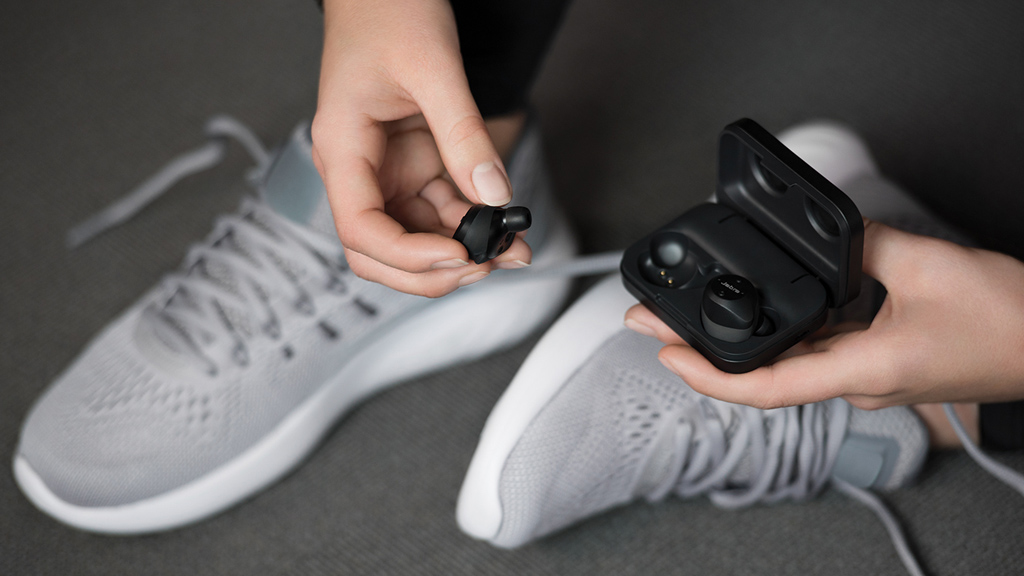Wireless earbuds are set to receive a massive boost to battery life next year

I have a confession to make, and it's something that I've been meaning to get off my chest for a while.
I hate true wireless earbuds.
Yes, I can see why people like them. The form-factor, which has most famously been used by Apple with the AirPods, ditches the wires entirely - meaning that there's no cable at all hanging in between your ears and around your neck.
I get it. They're light, they're easy to use, and you don't have to worry about coats or scarfs getting tangled up with your headphone's wires and pulling the earbuds out of your ears.
But here's the thing, I've never found the short bit of wire that connects two earphones that inconvenient, and most of the time I actually like the way it lets you take your earphones out and let them dangle round your neck.

So when Qualcomm unveiled their latest Bluetooth chip, the memorably named QC5100, I was a little disappointed. This seemingly wouldn't be a massive chip designed to push the boundaries of what over-ear headphones can do.
Instead it's a chip aimed towards true wireless earbuds. It's designed to make them consume less power, offer better audio, and even include noise-cancellation in as part of the bargain.
Sign up for breaking news, reviews, opinion, top tech deals, and more.
But after talking with the team I came away hopeful about what the new chip could do for headphones of every shape and size.
Let’s start with what it wants to achieve for true wireless earbuds.
Big functionality in a small package
Few people will see what the QC5100 actually looks like, but anyone who does will immediately be struck by how tiny it is.
In fact, the whole SoC can be folded up to take up just a little more space than a British 20p coin.
But despite its size, it is still packing a lot of power. It's equipped with a quad-core processor with two cores dedicated to audio processing, and two more application processors.
It supports Qualcomm's latest AptX-HD bluetooth codec for high-resolution music playback, and even has dedicated hardware to support noise-cancellation.
Other parts of the chip are tasked with handling fitness tracking and voice assistant processing duties.
In other words, Qualcomm hopes this new chip will be able to tackle the increasingly diverse demands of modern 'hearables', while still having enough dedicated hardware to make sure your music sounds good at the end of the day.
The chip does all this while being incredibly light on power usage. I was able to listen to the chip while it was plugged directly into a power metering device and saw that the ‘master’ earbud (i.e. the one that's connected to the phone) was drawing just 5.5mA of power, while the 'slave' earbud (the one only connected to the other earbud) was drawing as little as 4.2mA.
Even more impressive is the fact that the earbuds will trade master and slave duties depending on which has more power available so that one doesn't run out of power before the other.
So what's in it for me?
If you're already on board with the true wireless form-factor then the announcement of the new chip should be music to your ears.
By mid 2018 (when the first headphones using this chip should start going on sale) you should be able to buy true wireless earbuds that will finally have a half-decent battery life of over just a couple of hours.
But there's also good news for anyone, like me, who prefers their headphones to be a little bulkier.
I asked Qualcomm whether the new chip could also be used in over-ear headphones and the answer was an emphatic 'Yes'.
In fact, designing the chip to approach the extreme edge case of true wireless earbuds has trickle down benefits for every other pair of headphones out there.
Forcing headphones to work on tiny amounts of battery means that over-ear headphones could conceivably see their battery life skyrocket, as well as integrating the same enhanced noise cancellation technology allowed by the new tech.
So whether you prefer your headphones as minimal as a sleek pair of true wireless earbuds, or as full featured as a pair of over-ear cans, there's every reason to be excited by the next generation of headphones.

Jon Porter is the ex-Home Technology Writer for TechRadar. He has also previously written for Practical Photoshop, Trusted Reviews, Inside Higher Ed, Al Bawaba, Gizmodo UK, Genetic Literacy Project, Via Satellite, Real Homes and Plant Services Magazine, and you can now find him writing for The Verge.